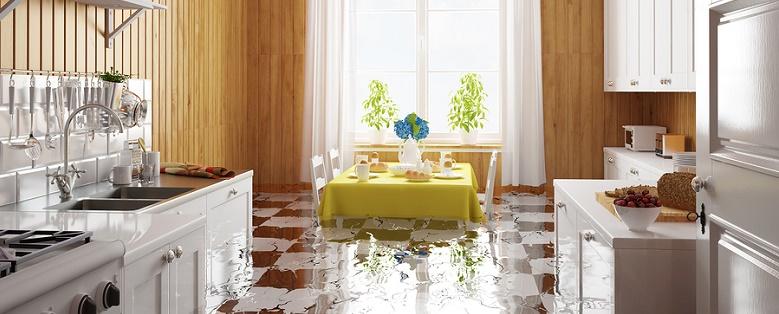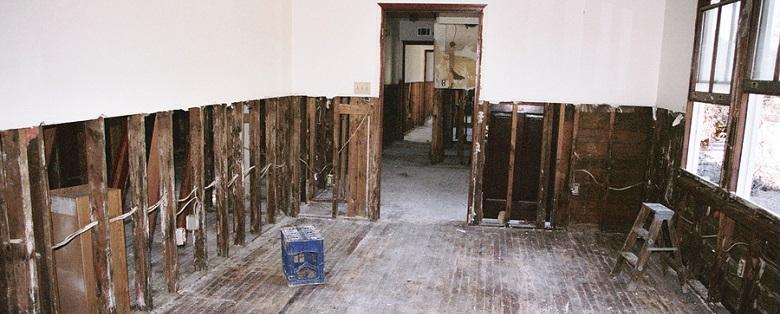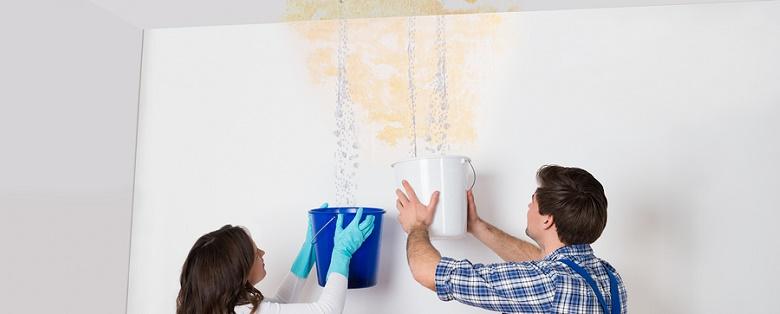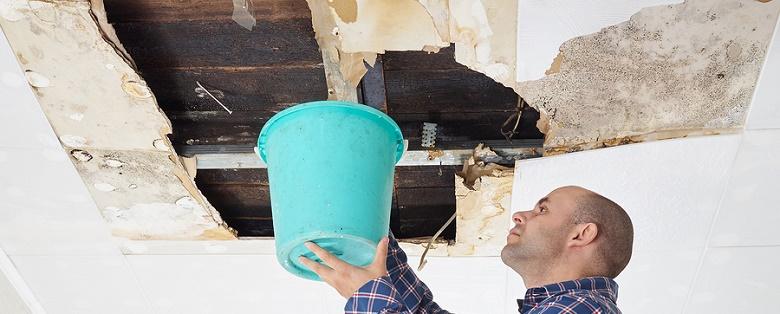
Flood damage comes in many forms. Although the worst situations involve forces of nature, this does not make the more common incidences of flooding in the home any less annoying or damaging. Most water damage that occurs in a home happens due to simple issues that are easily remedied. By understanding what the most common causes of flooding in a home, homeowners can take steps to prevent them before having to call for flood damage cleaning!
Defective Washer Hoses
Defective washer hoses are one of the most common causes of unintentional flooding in the home and fortunately the easiest one to prevent. Washer intake hoses dry out and crack after a while and fittings can wear out. This often results in either a slow leak that can cause serious damage to flooring or sudden leaks where a hose fails completely.
A homeowner could wind up with gallons of water from inside the washer spilling onto the floor or worse yet, water from the feed line leaking everywhere. This problem can be avoided by replacing rubber washer hoses with strong, braided ones and installing a washer shutoff valve.
Water Heater Leaks
The water heater is another source of flood damage, as many people forget about checking their heaters. Water heaters can rust or experience other kinds of failures, leaving slow leaks to cause costly damage to the floors and walls around it. Worst of all, because these appliances are connected to a continuous source of water, the leaking continues and worsens over time until it is finally detected. By then it may be time for flood damage cleaning.
Homeowners need to routinely check water heaters for leaks and pay close attention to the unit's age. Replacing an old unit that shows signs of rusting can prevent a disaster.
Clogged Drains
Clogged drains can be more than just a nuisance. When water drains slower and collects in sinks or tubs, this could be a flood waiting to happen. Chronically slow drains should be investigated to determine the problem and cleared out before a sudden backup of water causes a flood. Even small amounts of water pouring onto the floors in bathrooms and kitchens can cause flood damage since the water seeps and soaks into everything. A plumber should inspect slow drains so they can be cleaned before a flood can happen.
Drain Pipe and Septic Issues
Septic backups and clogged drainpipes are a serious concern that can precede very unpleasant and unsanitary flooding in the home. Septic backups are usually caused by an overfull septic tank or an issue with the drainfield, while clogged pipes can be caused by many different things. In either case, before an overflow that requires flood damage cleaning occurs, homeowners should have an experienced plumber or septic service out to take a look.
Clogged and Dirty Rain Gutters
Even though they are not actually inside the home, dirty rain gutters that become clogged are another common cause of home flood damage. When water cannot flow along the gutter to the downspout, it pools in the gutters and pours over the edges, falling to the ground around the home. When this water is not properly diverted, it can saturate the ground around the foundation, eventually working its way into the house through small cracks in the foundation that may generate over time. In extreme cases, water can flood into basements. Keeping the rain gutters clean is the easiest remedy.
As simple as some of these concerns may seem, they cause countless dollars in home flood damage every year. Thankfully, all of these issues are easy to prevent. Before a small problem becomes a bigger one that involves flood damage cleaning, homeowners should add these simple items to their home maintenance list and practice them regularly!


